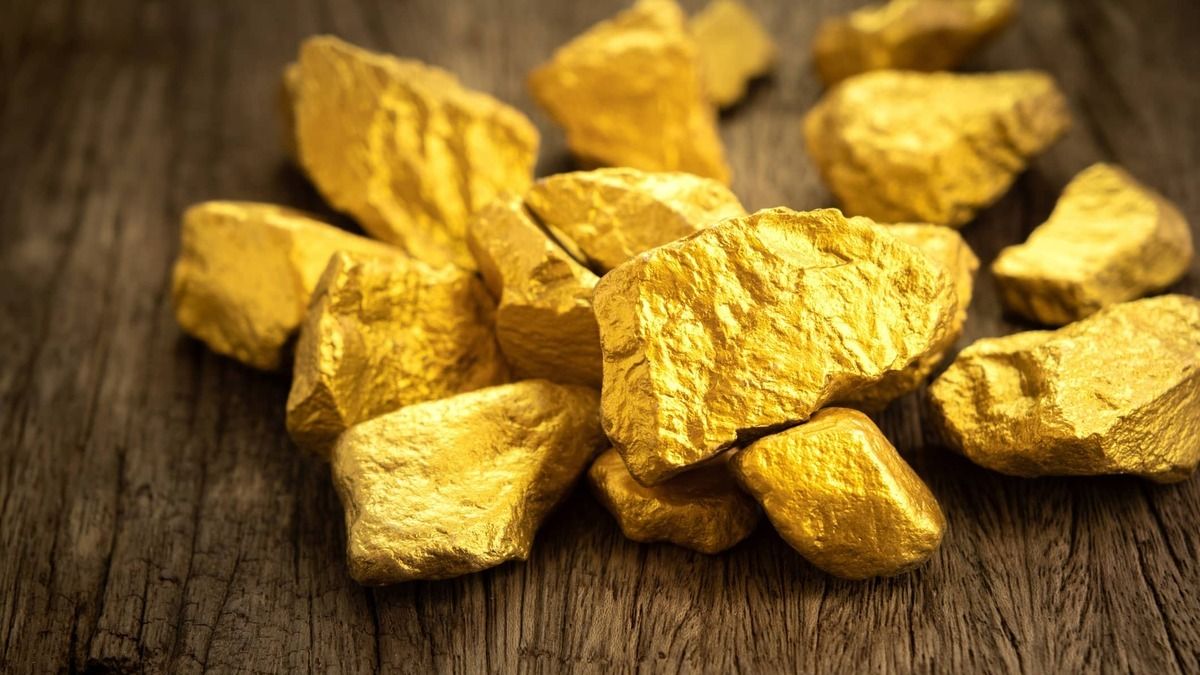For the second consecutive month last April the Central banks although they continued to buy gold they did it at a lower pace Adding hardly 12 net tons (12% less than in March and below the average of 12 months of 28 tons) To world reserves of precious metal. In this framework, the National Bank of Poland that is still the main buyer, both in April and for the year. Another sign that the April data left was the intention of several African central banks to add gold to their reserves.
Now, what could be behind this recent deceleration of monthly golden bank purchases: according to experts, it could be due, in part, to the rapid appreciation of gold from the beginning of the year. In this regard, they explain that, although it is unlikely that the new historical maximums that have reached the price of gold It can dissuade the central banks of buying gold, since they tend to be more strategic, Yes, the deceleration in the rhythm of monthly net purchases could partly explain.
It should be noted that the Historical series of monthly purchases is very volatilewhich means that the activity of one month does not necessarily indicate the activity of the subsequent months, in addition, the data can sometimes be published with a significant delay.
gold silver metals
Depositphotos
Therefore, experts in this gold market segment They advise not to interpret this recent deceleration too much of the purchases reported. Therefore, although the Price increase may have promoted gold assignments In some portfolio of central banks, possibly bringing them closer to the objectives, They are still waiting for purchases in general to continuesince the economic and geopolitical panorama It is still very uncertain.
Purchases and outstanding sales in April: Poland leadra, Africa adds
Who bought in April?
According to data from International Monetary Fund (IMF)of the respective central banks and of the WGC, Poland leads gold purchases from central banking While five other central banks reported changes of 1 ton or more in their gold reserves. Let’s see:
-
He National Bank of Poland (NBP) He remained the largest gold buyer among central banks when adding 12 more tons to their gold reserves, raising them to 509 tonssurpassing the European Central Bank (ECB). Since the beginning of the year, NBP gold reserves have increased in 61 tonstwo thirds of the 90 tons he added in 2024.
-
He Czech National Bank He informed that he increased his gold reserves in 3 additional tons And so chain 26 consecutive months adding goldduring which he has bought a total of 47 tons. Total gold reserves approached the 59 tons At the end of April.
-
The data of the Popular Bank of China show that their gold reserves increased in 2 tonsbeing the Sixth consecutive month of purchases. Net purchases accumulated in the first semester ascend to 15 tonswhich contributes to raising gold reserves to 2,294 tons.
-
He Central Bank of Türkiye reported an increase in 2 tons In official gold holdings (Central + Treasury) during the month, which raised gold holdings to 626 tons.
-
Gold reserves of National Bank of the Kyrguistan Republic increased in 2 tonswhat marks his First monthly net purchase since last December. So far from 2025 the bank has sold 2 net tons, with a total of 37 tons of gold in your wallet.
-
He Kazakstan National Bank He added 1 ton to his gold reserves, raising the total gold in his possession to 291 tons7 tons more than at the end of 2024.
-
He Central Bank of Jordan increased their gold reserves in almost 1 tonto 73 tons.
-
Gold reserves of Central Bank of Uzbekistan They decreased in 11 tonsthe third consecutive month of sales around that level. So far this year, total gold reserves have decreased in 26 tonsto the 356 tons.
He Balance of the first four -month period shows that Purchases from central banks are still generalizedalthough limited to emerging markets and dominated by the National Bank of Polandcompared to sales that are less generalized, but are also dominated by a single bank.
A fact that should be taken into account when projecting what can come for the rest of the year is the intention of African banks to join gold fever and increase precious metal reserves. In early May, the Namibia Bank announced plans to accumulate gold with the aim of increasing it to 3% of its total reserves. The bank said that this is aligned with the global trends of the central banks, given the strategic value of gold to protect against inflation and improve resilience during economic crises. According to the latest IMF data to March 2019, the Namibia Bank I had no gold reservations.
On the other hand, the NATIONAL BANK OF RUANDA He also announced last month his intention to accumulate gold reserves, as his governor Soraya Hakuziyaremye made clear: “Like our peers, the Central Bank of Rwanda is conducting a study to determine if gold can be considered an additional asset in which to invest, given its ability to counteract disturbances in financial markets and as an option of coverage to external disturbances”The Central Bank has approved the incorporation of gold from its new fiscal year in July.
Also in May, the governor of the Uganda BankMichael Atingi-Ego, told Bloomberg TV financial channel that the bank would diversify their reserves with gold from artisanal miners. The objective was to use this accumulation of gold to cover the maturities (in crossed currencies).
Also, through a statement, the Central Bank of Madagascar He indicated that he will acquire 4 tons of gold as part of a plan to increase reserves and Formalize gold exports.
On the other hand, the governor of the Kenya Central BankKamau Thugge, told Bloomberg TV in April that they are “actively considering“Add gold to your reserves for the purpose of diversificationalthough without a schedule about when they could do it. The IMF data realizes that last March the bank had around 17 kg of gold As part of your reservations.
Source: Ambito
I am a 24-year-old writer and journalist who has been working in the news industry for the past two years. I write primarily about market news, so if you’re looking for insights into what’s going on in the stock market or economic indicators, you’ve come to the right place. I also dabble in writing articles on lifestyle trends and pop culture news.




